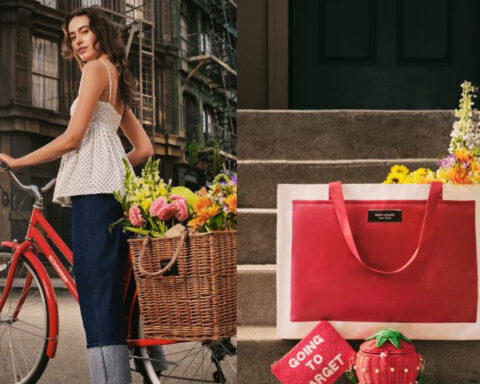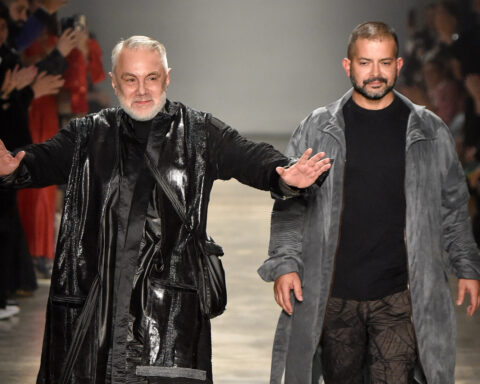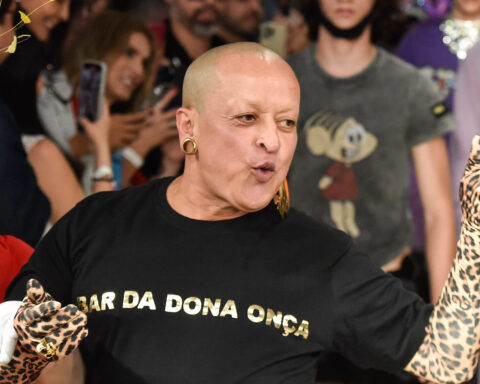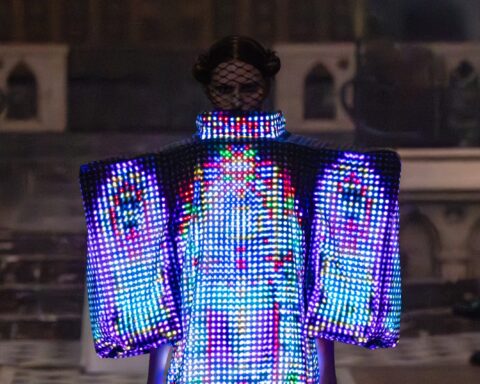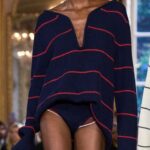Check out the highlights of the Fall/Winter 2024 runways in Paris
This Wednesday (28th) at Paris Fashion Week showcased innovative designs in everyday wear, drawing inspiration from a movie, an artist, chairs, and a hometown. Here are the highlights!
For Undercover’s Fall/Winter 2024 ready-to-wear collection, Jun Takahashi found inspiration in everyday life—highlighting the significance of the mundane and the importance of tradition.
“Perfect Days,” Wim Wenders’ latest film, explores the optimistic worldview of Hirayama, a janitor in Tokyo. This inspired Takahashi to imbue his clothing with a similar ethos, transforming mundane garments into symbols of accessible elegance and genuine happiness.
The show began with what seemed to be a basic white tank top and jeans but was actually a jumpsuit featuring ribbed knit inserts along the pants’ side seams, matched with the model’s hand-carried sweater. This transformation of everyday attire continued with reimagined pieces like cardigans, gray marl sweatshirts, and tailored garments adorned with patches of various fabrics, such as chiffon, metallic tinsel, and mohair.
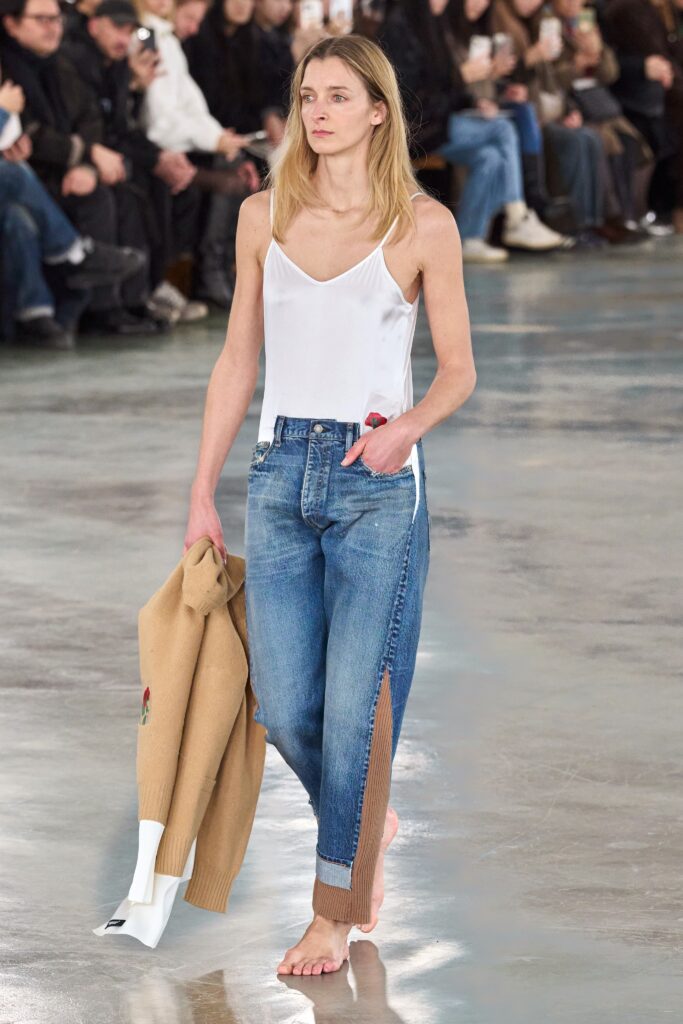
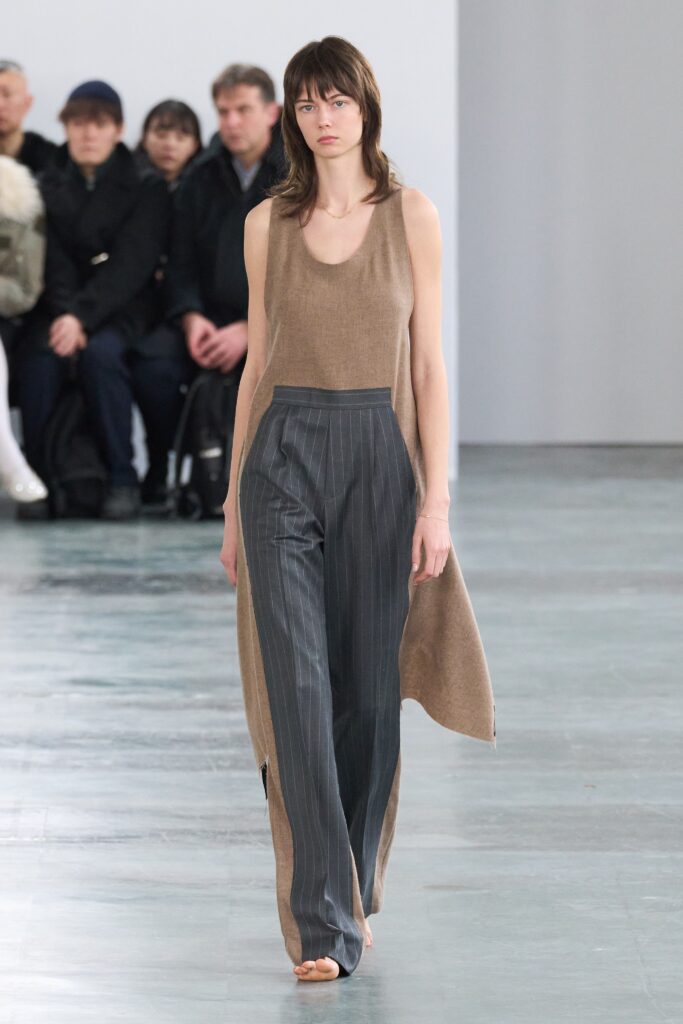
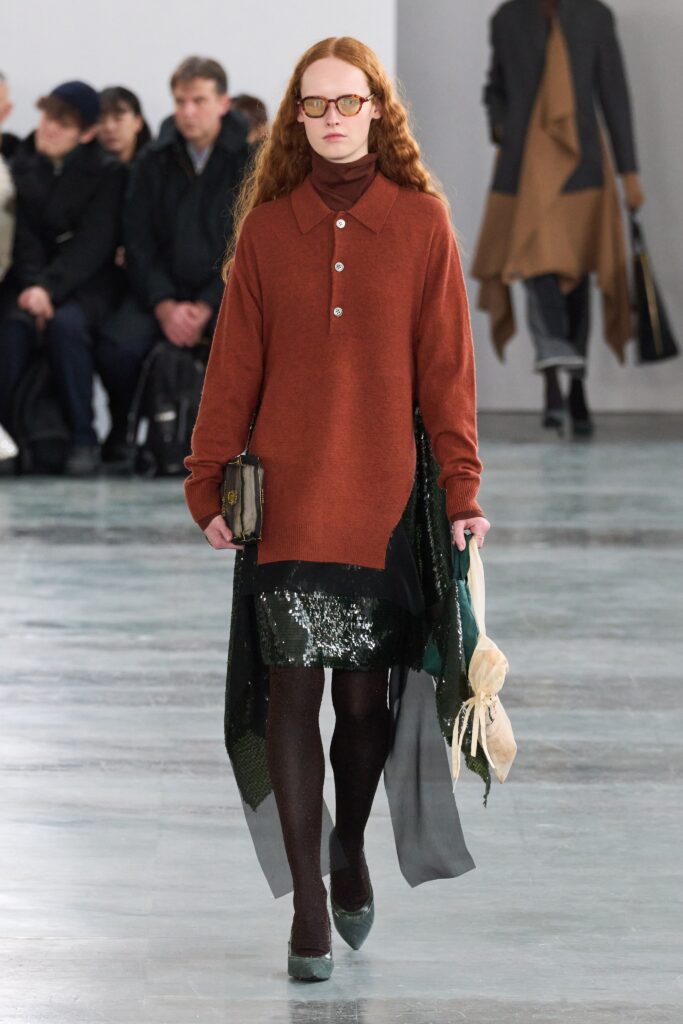
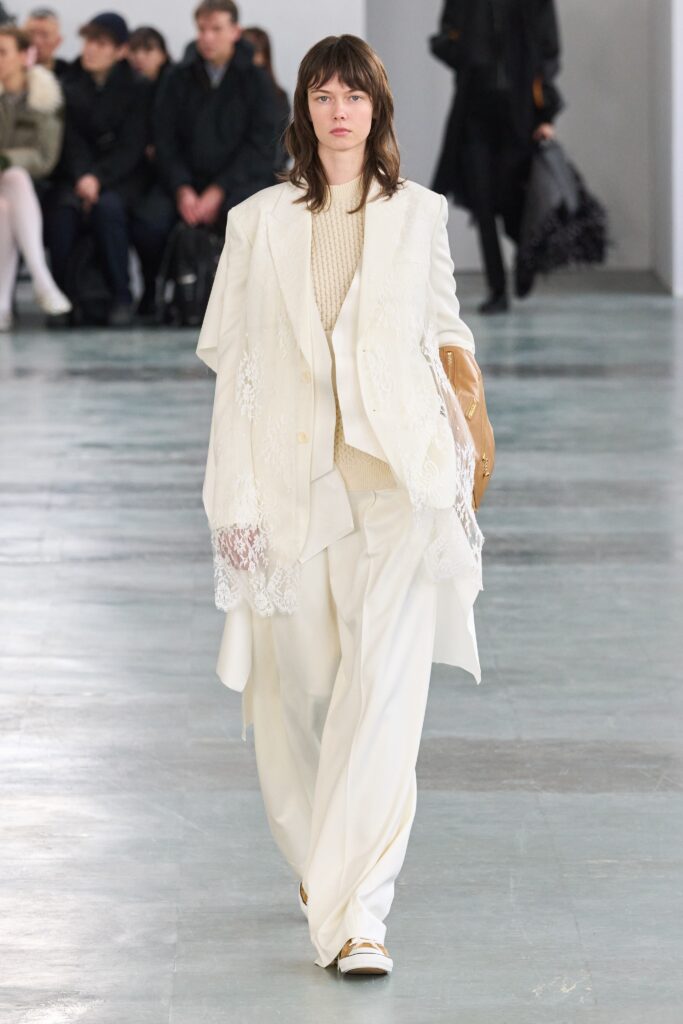
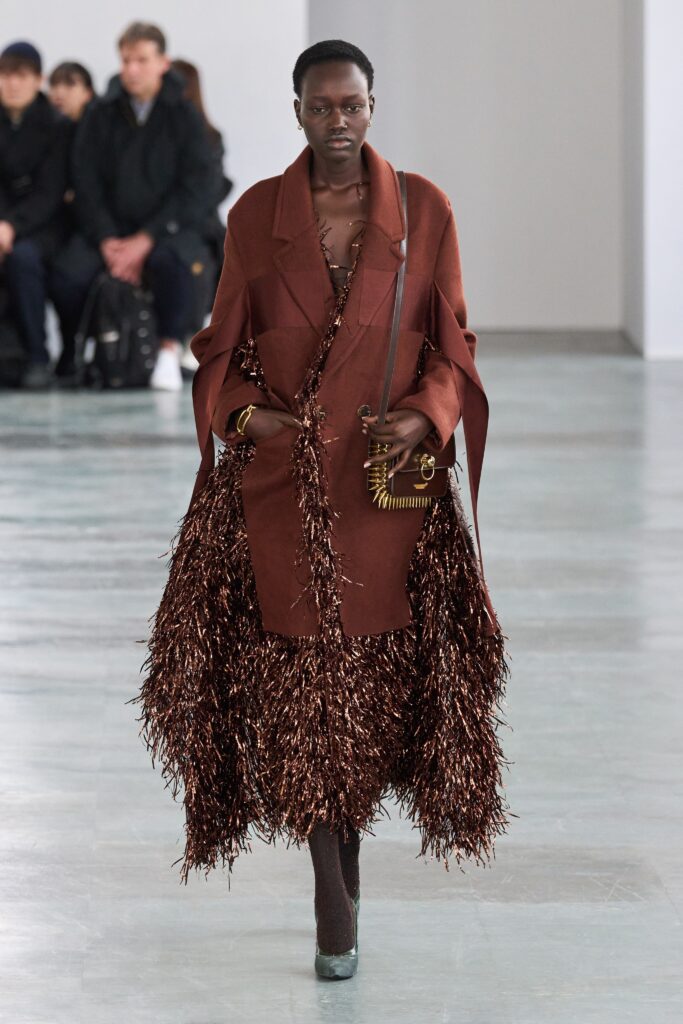
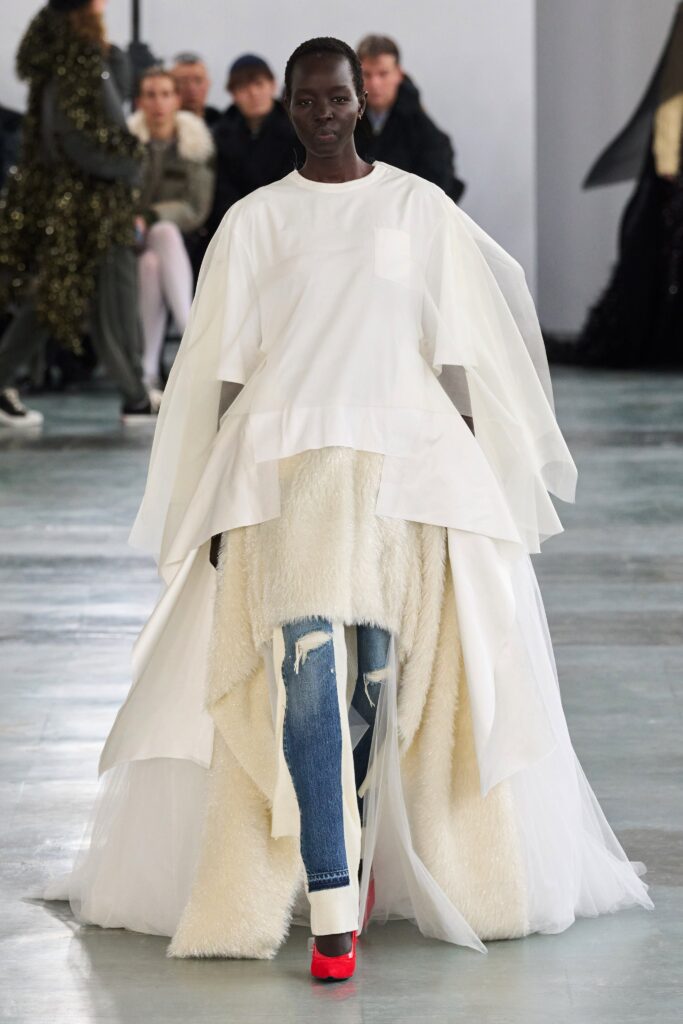
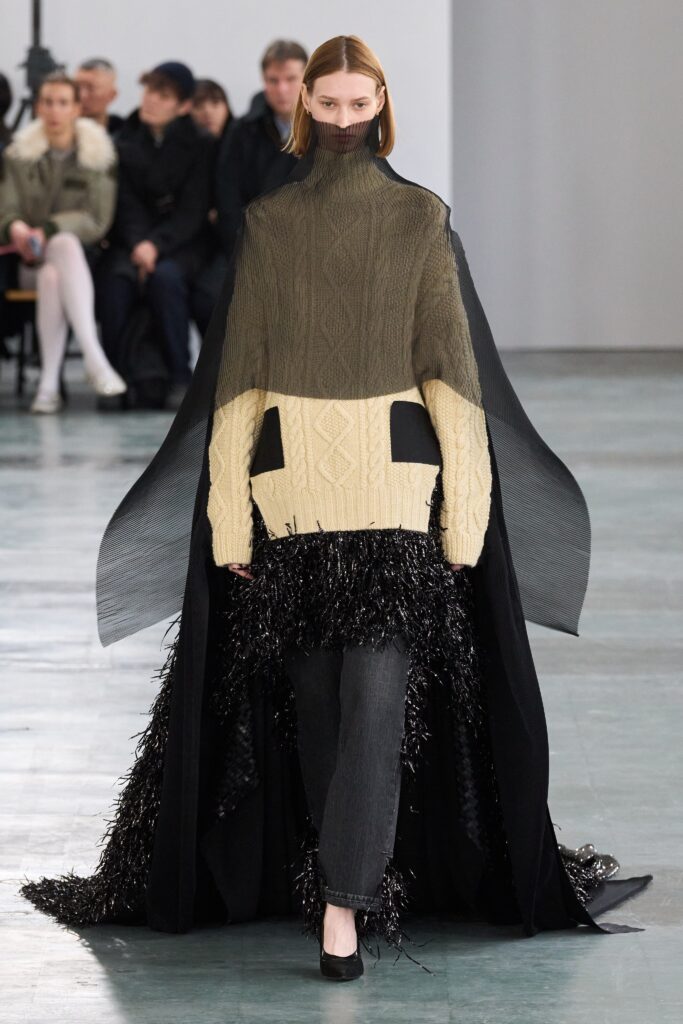
Dries Van Noten titled his Fall/Winter 2024 ready-to-wear show “The Woman Who Dares to Cut Her Own Fringe.” On the catwalk, we witnessed unexpected combinations such as gray marl sweatshirt fabric adorned with iridescent sequins and lavender silk duchess paired with faded denim jeans. Although a camel coat appeared minimalistic, it harbored a myriad of colors and textures, ranging from shaggy, fur-like mohairs to metallics.
Van Noten infused a sense of spontaneity, showcasing zip-up hoodies with one sleeve removed and wrapped around the neck like scarves, and button-downs worn back-to-front with collars popped under stretchy nylon shirts.
Signature prints and embroideries made subtle appearances, with crystal fringe elevating black trousers into party attire and adorning a smart checked suit. Notably, the models’ long fringy bangs, nearly covering their eyes, stood out as the sole consistent element in the show, distinguishing Van Noten’s collection from his peers.
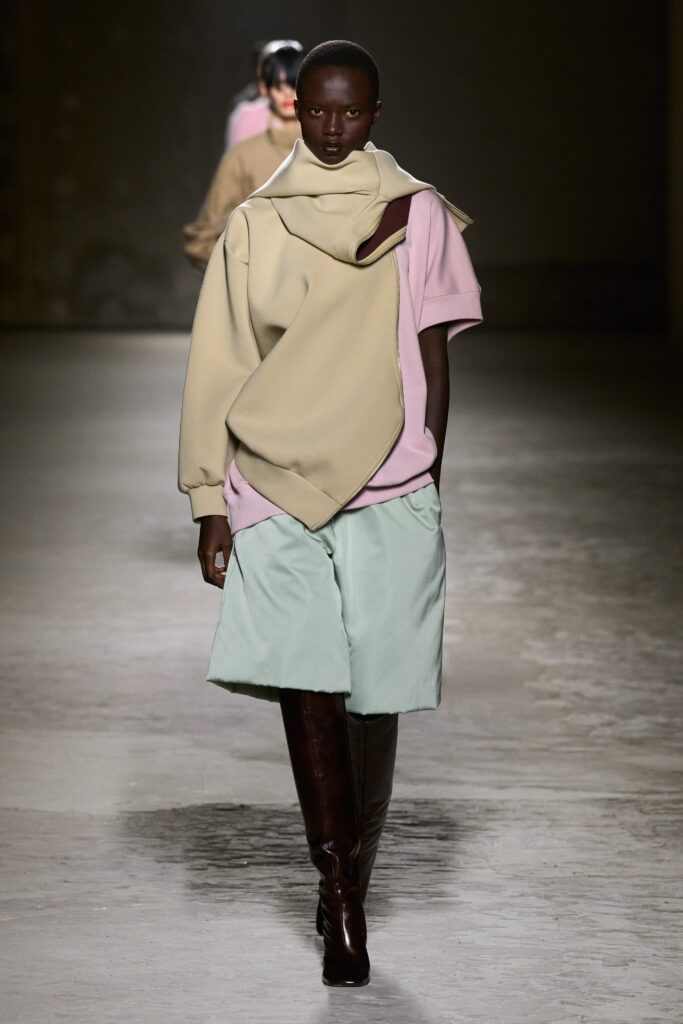
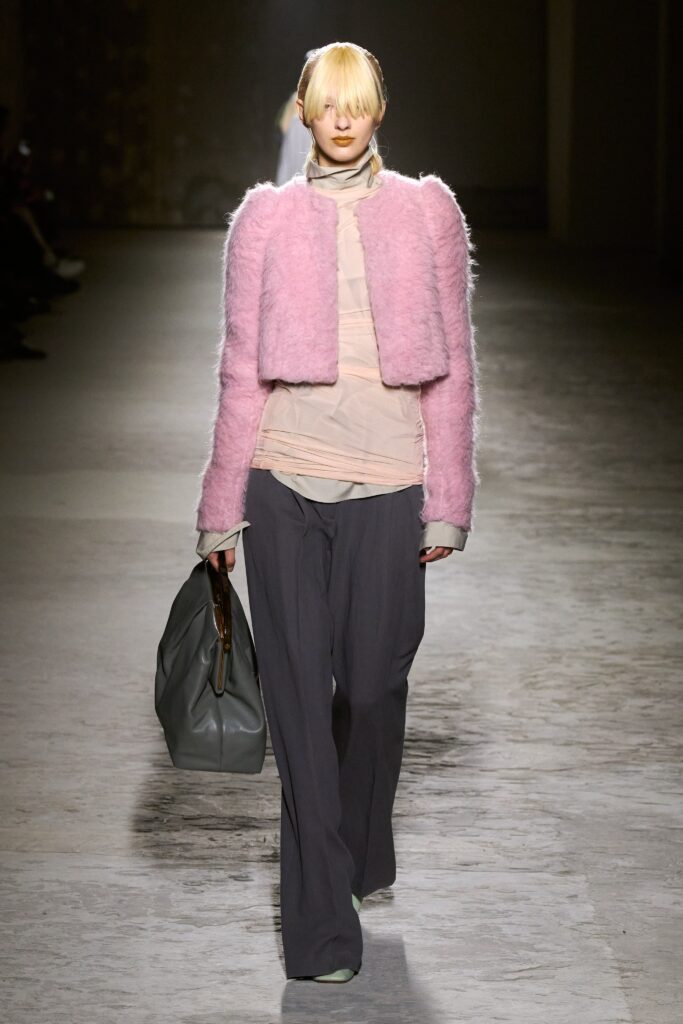
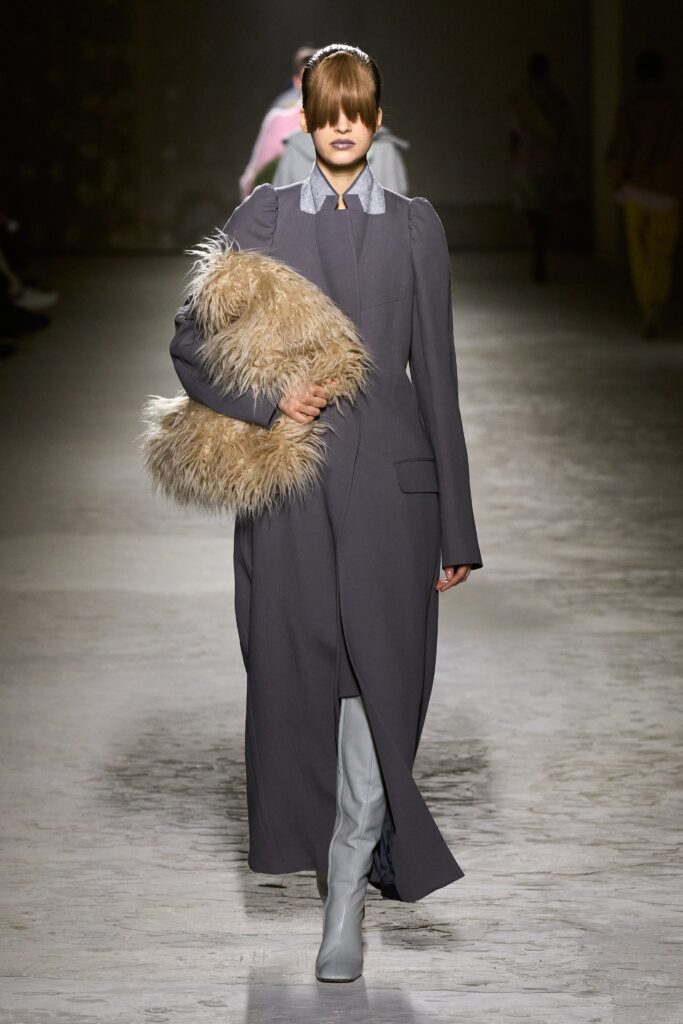
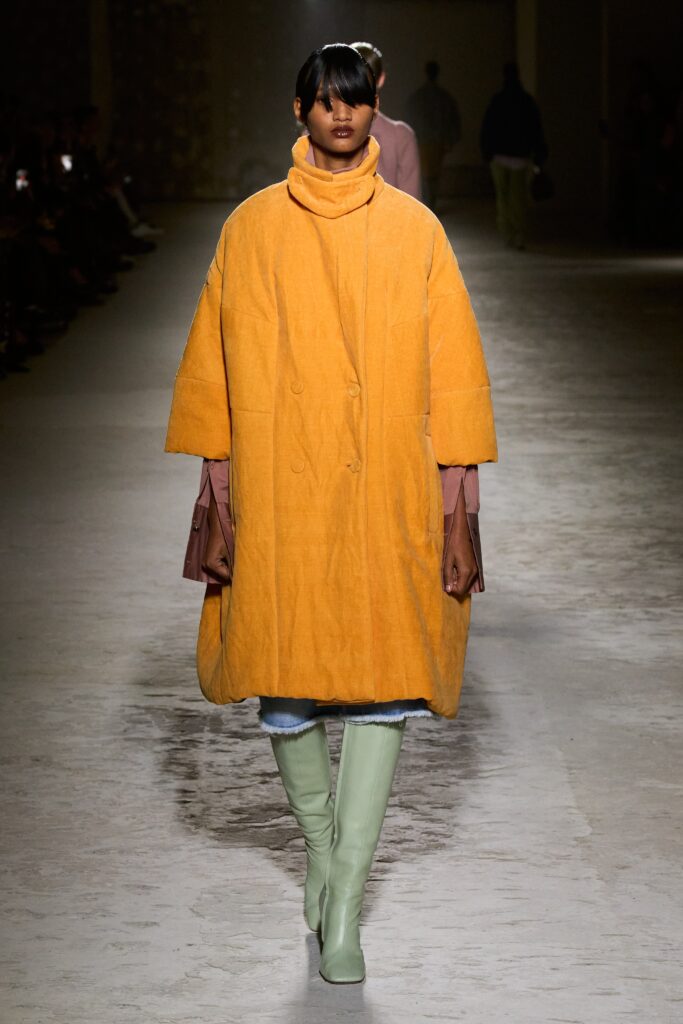
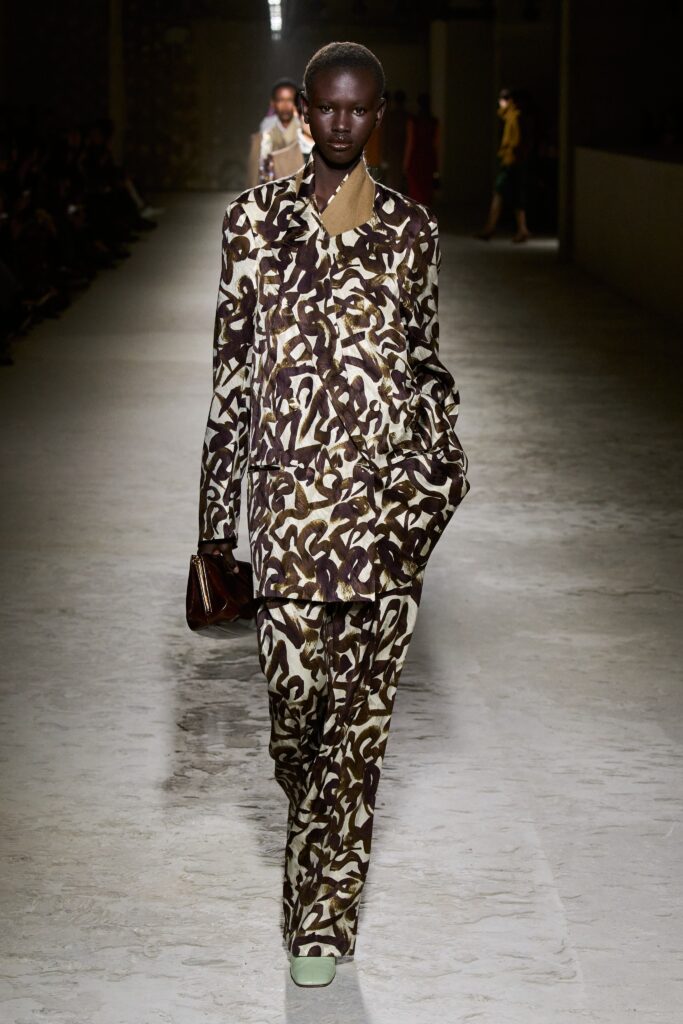
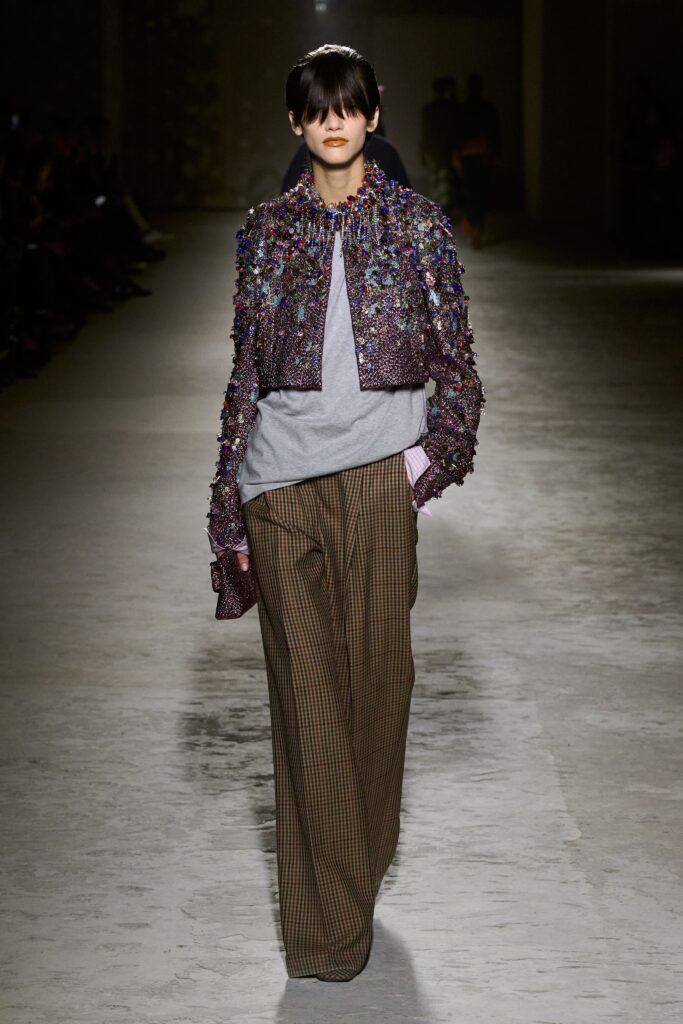
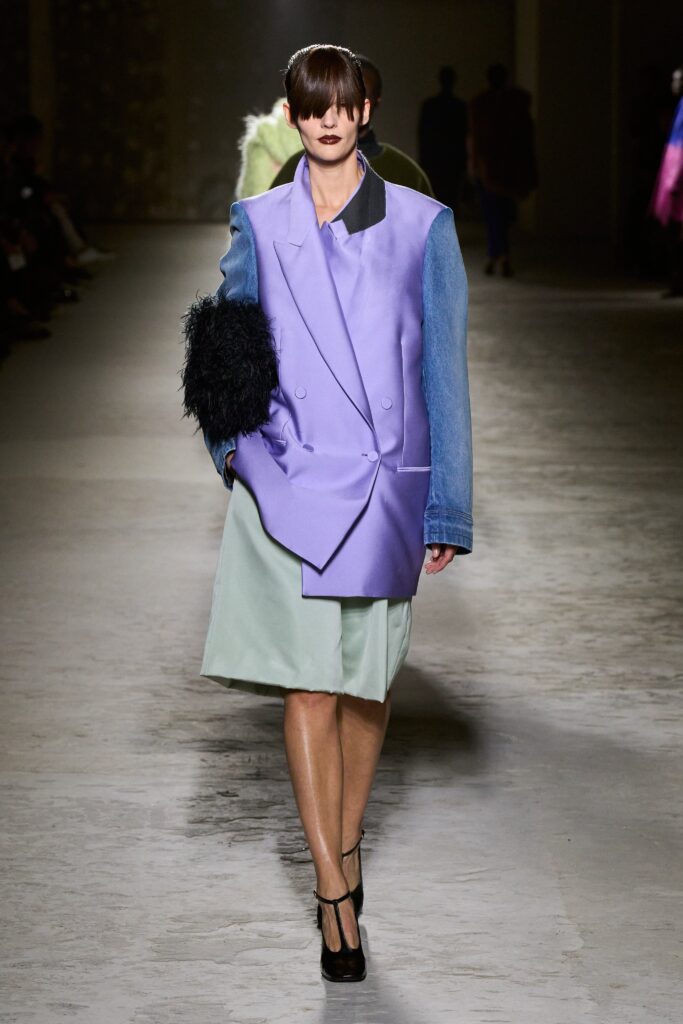
Photo credit: Go Runway
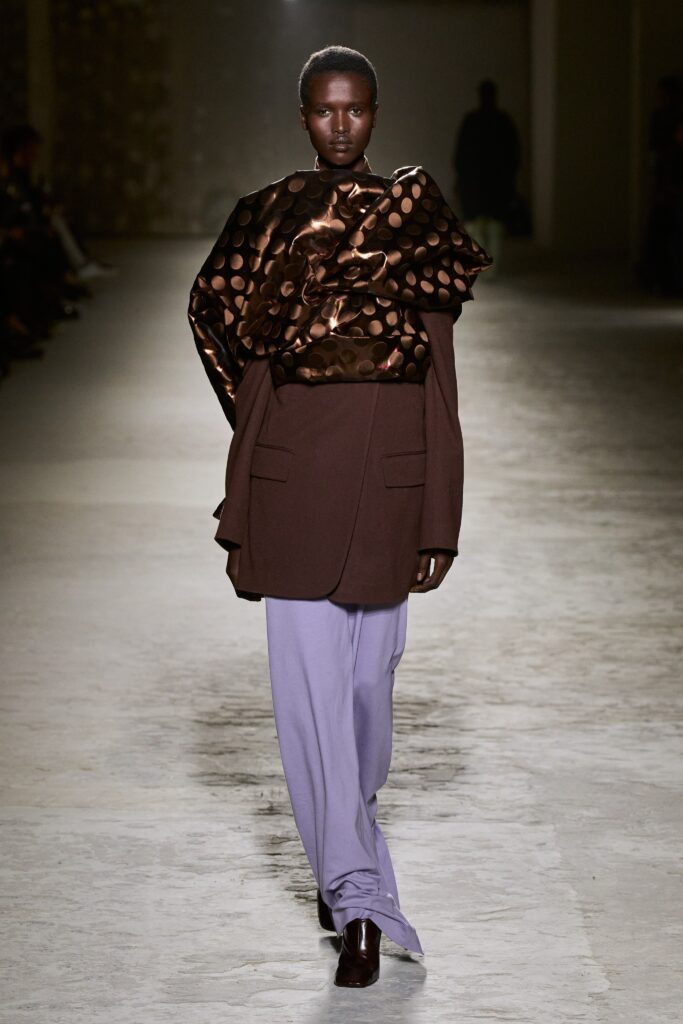
Photo credit: Go Runway
Denim and leather have been classics at Acne Studios since its inception, but tailoring, knitwear, and accessories have also earned their place at the Swedish brand. The Fall/Winter 2024 collection from Acne Studios drew inspiration from Villu Jaanisoo’s “Chairs in Rubber,” featuring large thrones crafted from recycled tires. Some guests sat on smaller versions placed at the center of the runway.
“This season, we’ve created a powerful leather and denim woman. I’ve always related to clothing through subcultural movements. Denim and leather can transcend genres and subcultures—from punk to S&M. When you want to feel tough, you gravitate towards leather and denim; it’s like armor. It always feels right—an empowering safety zone,” says Jonny Johansson, the creative director of Acne Studios.
Denim varied from high-collared truckers to strapless dresses, with finishes ranging from rusty and oily to metallic shine. Matte coatings adorned thick rib-knit dresses. Leather was presented in two styles: ruched bodies with broad zippers, and rigid dresses custom-fitted to the wearer.
The collection featured Icelandic shearling coats, faux furs, bodysuits, and ribbed-knit layers. Some dresses had flared bodices and showcased tailoring check patterns. Accessories blurred boundaries with bag straps on shoes and padlock earrings.
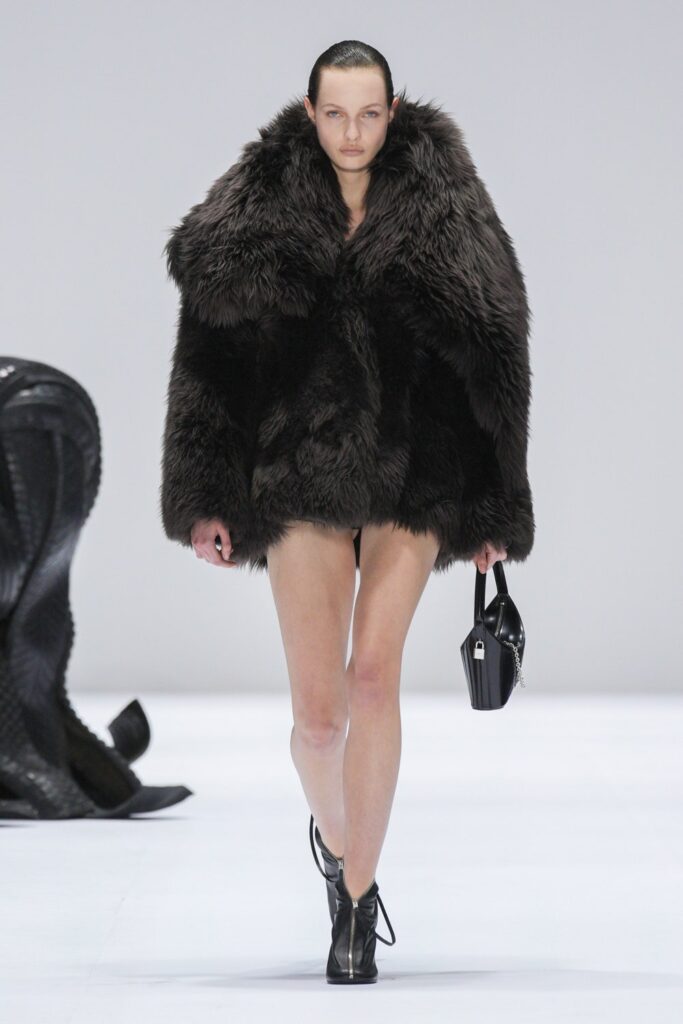
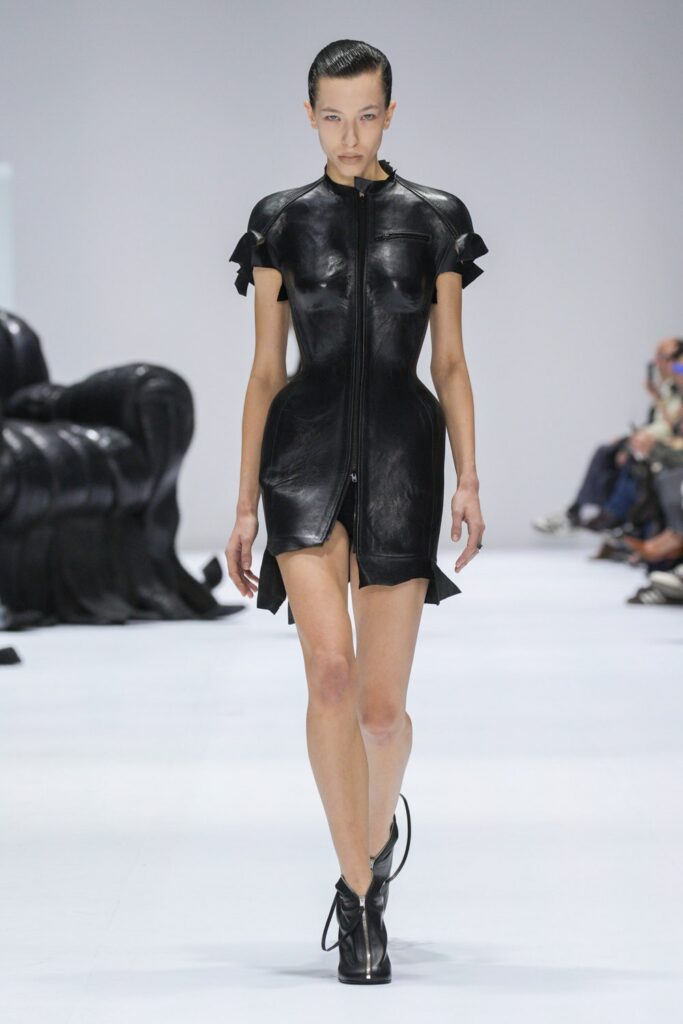
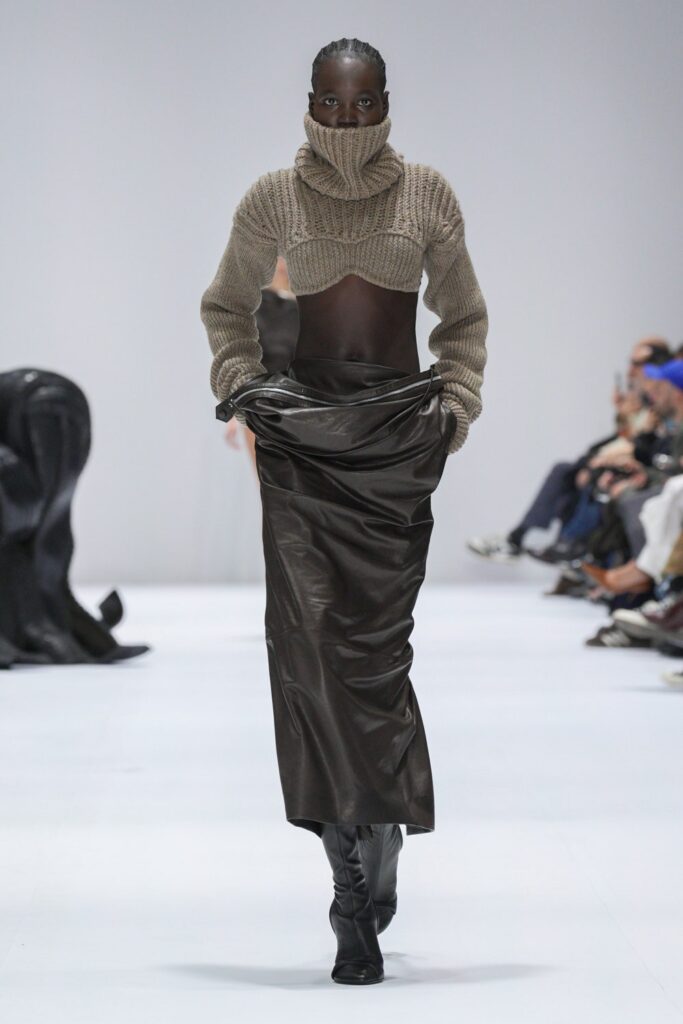
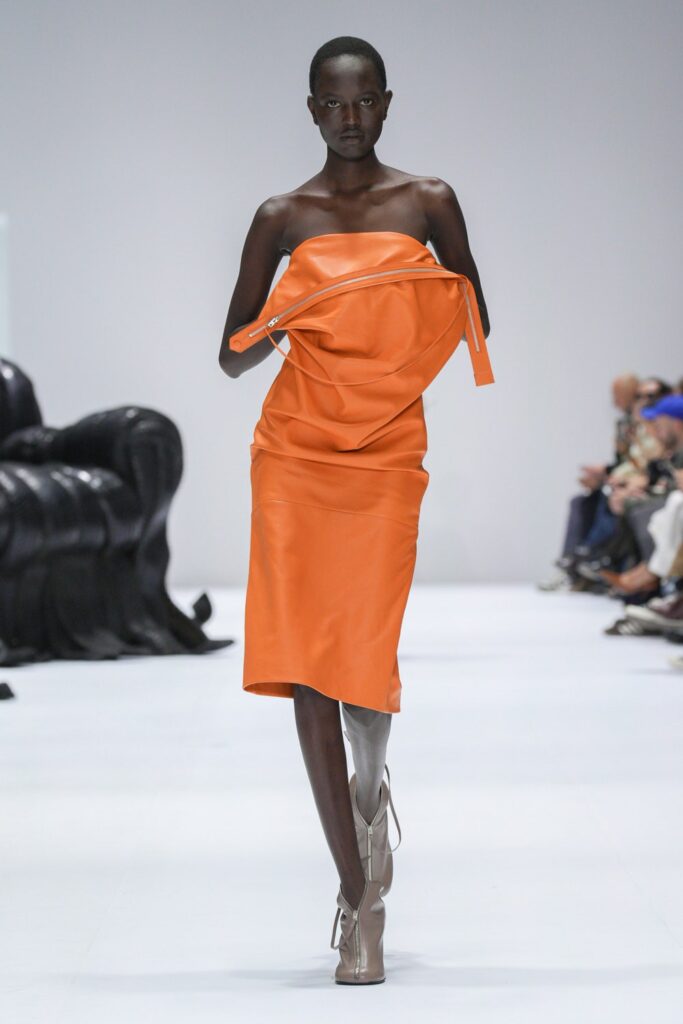
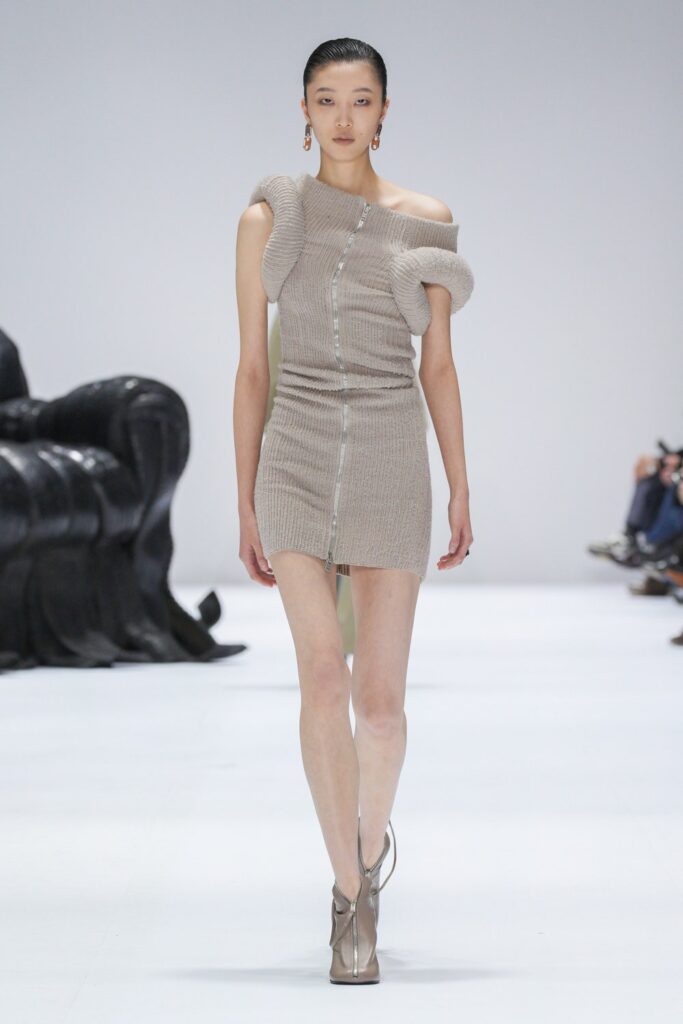
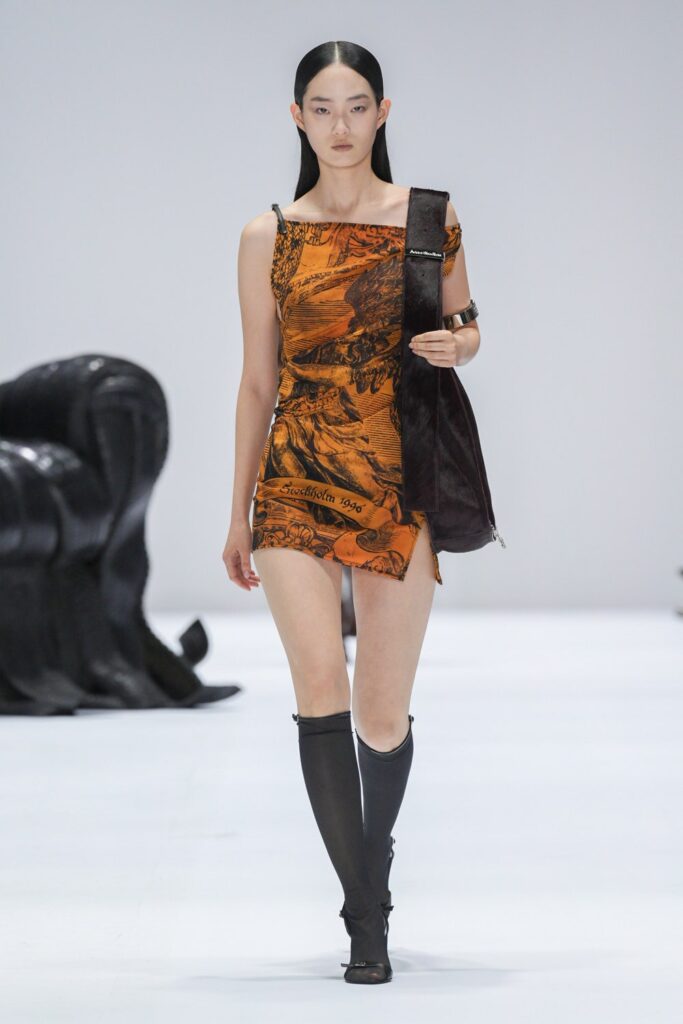
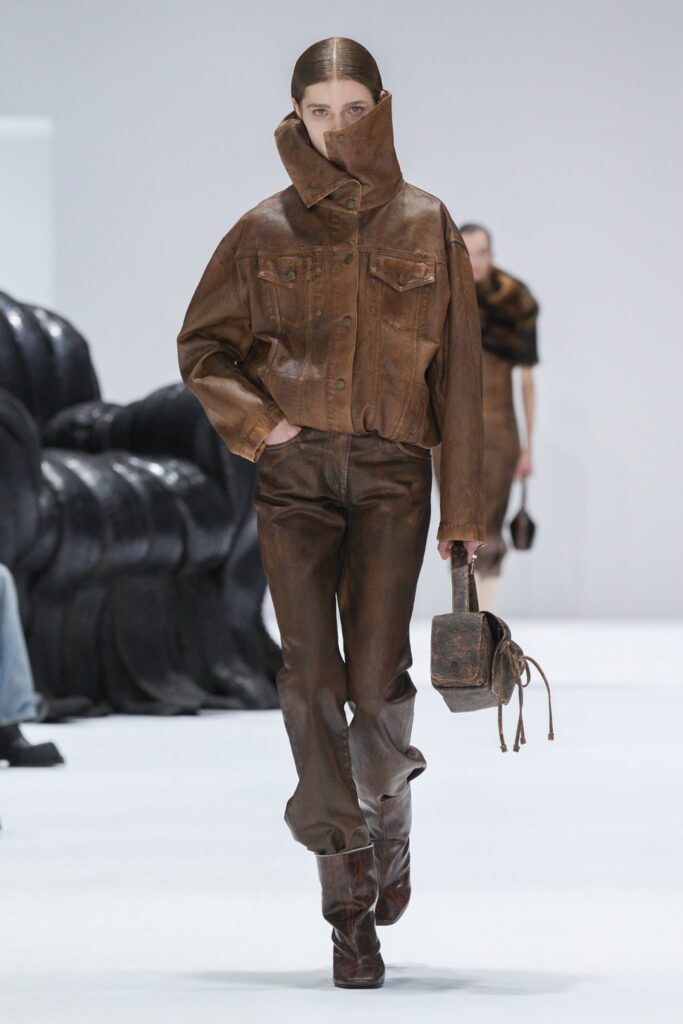
Photo credit: Go Runway
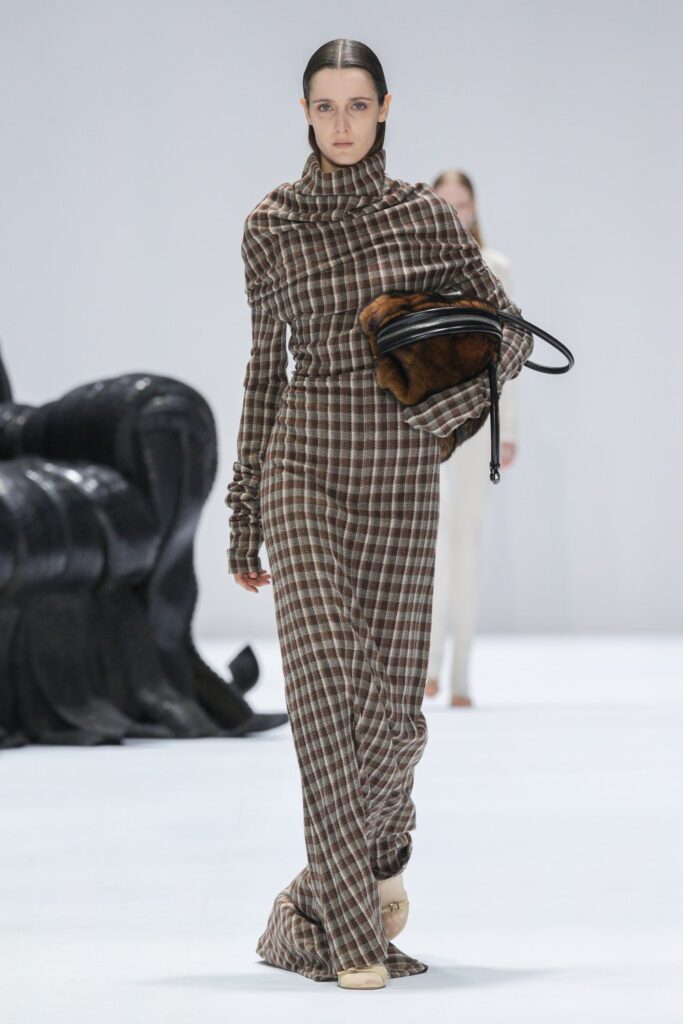
Photo credit: Go Runway
Inspired by his hometown of Bordeaux and his childhood, Olivier Rousteing presented Balmain’s Fall/Winter 2024 ready-to-wear collection.
The renowned wines of this regional capital inspired the abundance of grapes woven throughout the collection, appearing as metal bunch bags, inlaid shapes on leather dresses, and printed on silk garments.
Another motif drew from the twisting helix of a snail shell, transformed into golden breastplates, bodices, earrings, and decorative accents on belts and bags. These themes were reimagined in various iterations of trench coats, featuring formidable buttons reminiscent of the house’s blazers.
Gingham patterns reflected the designer’s internal duality, rendered in monochrome or navy and silver crystal stripes on dresses. Sharp peaked lapels and ruched pants added a touch of edge, while Balmain-branded net shopping bags filled with artificial fruit evoked domestic nostalgia.
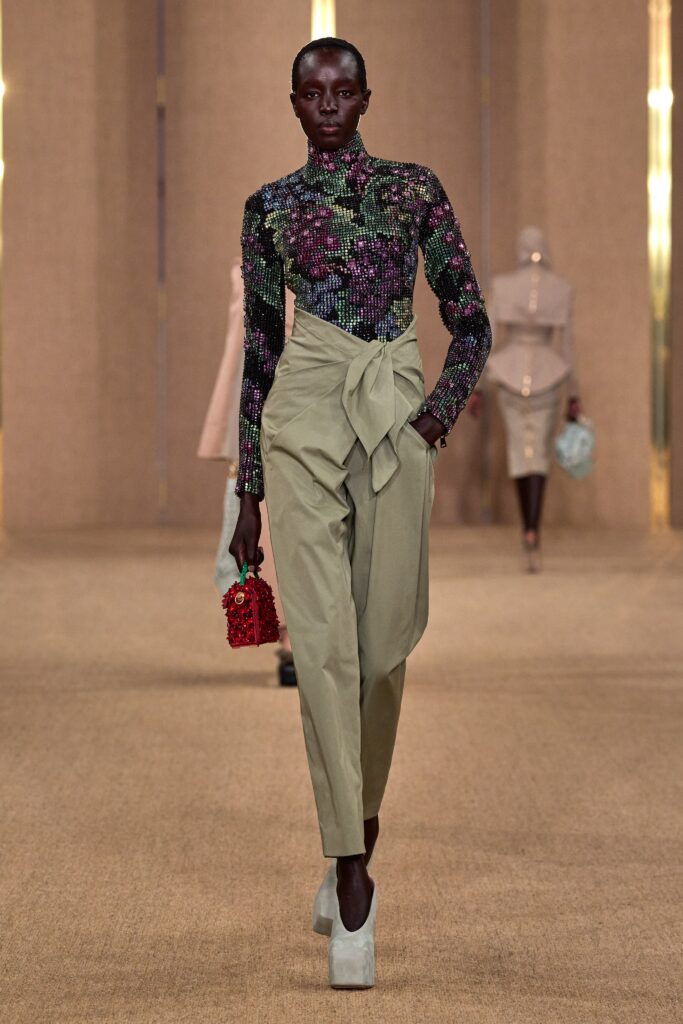
Photo credit: Go Runway
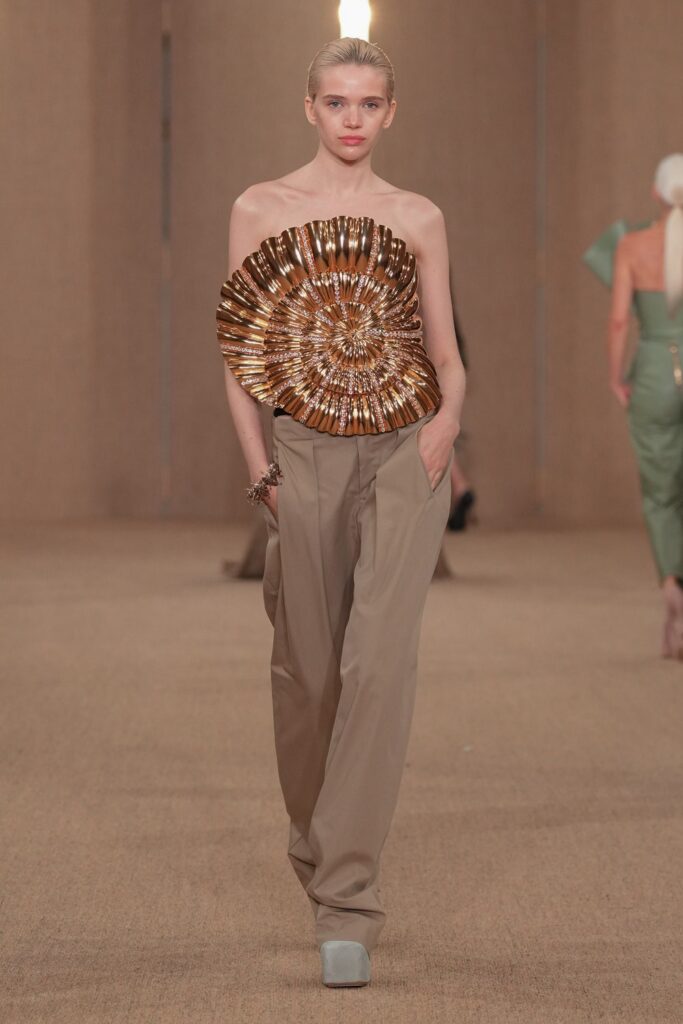
Photo credit: Go Runway
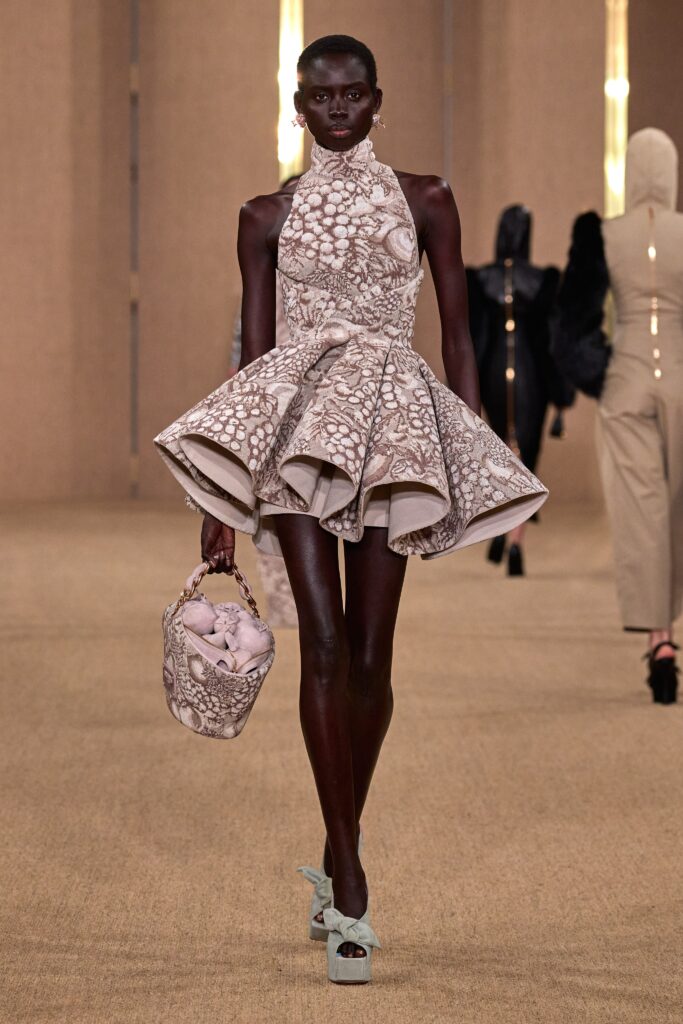
Photo credit: Go Runway
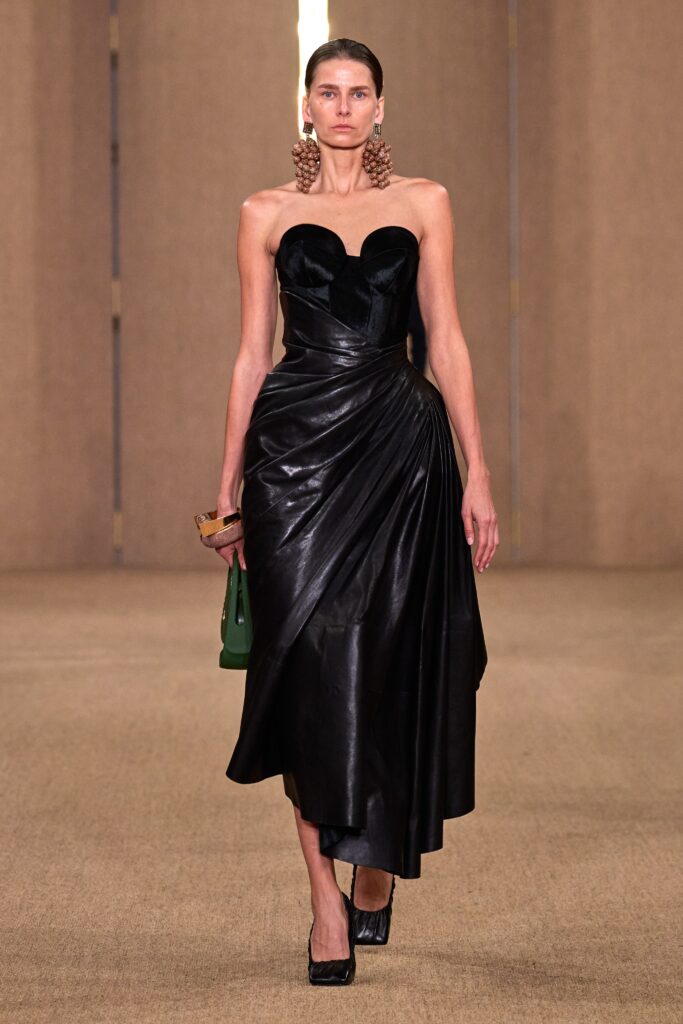
Photo credit: Go Runway
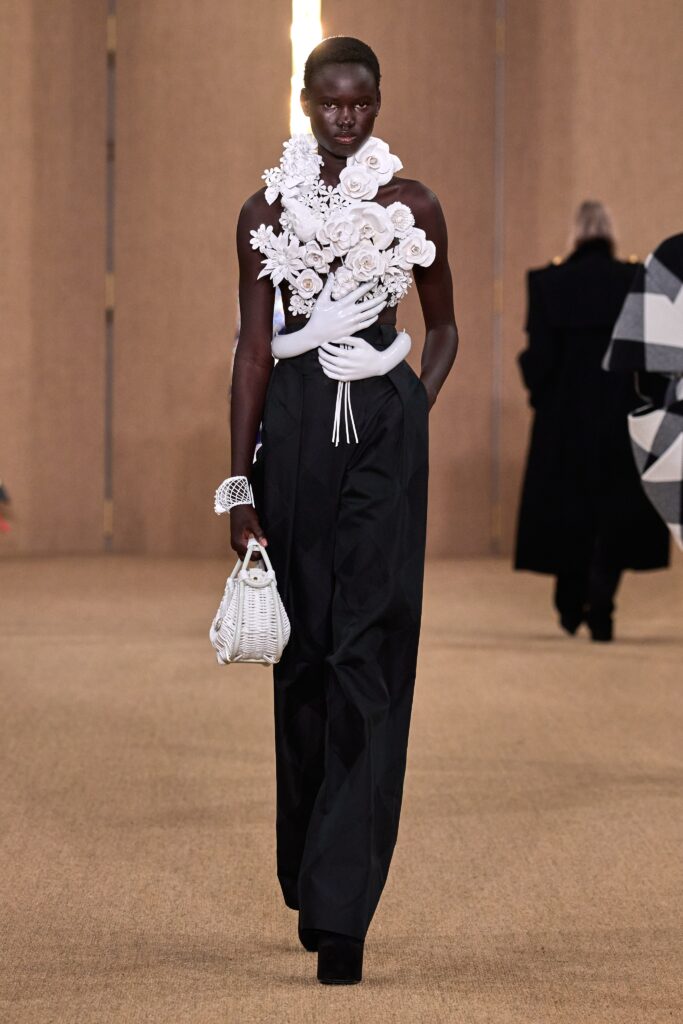
Photo credit: Go Runway
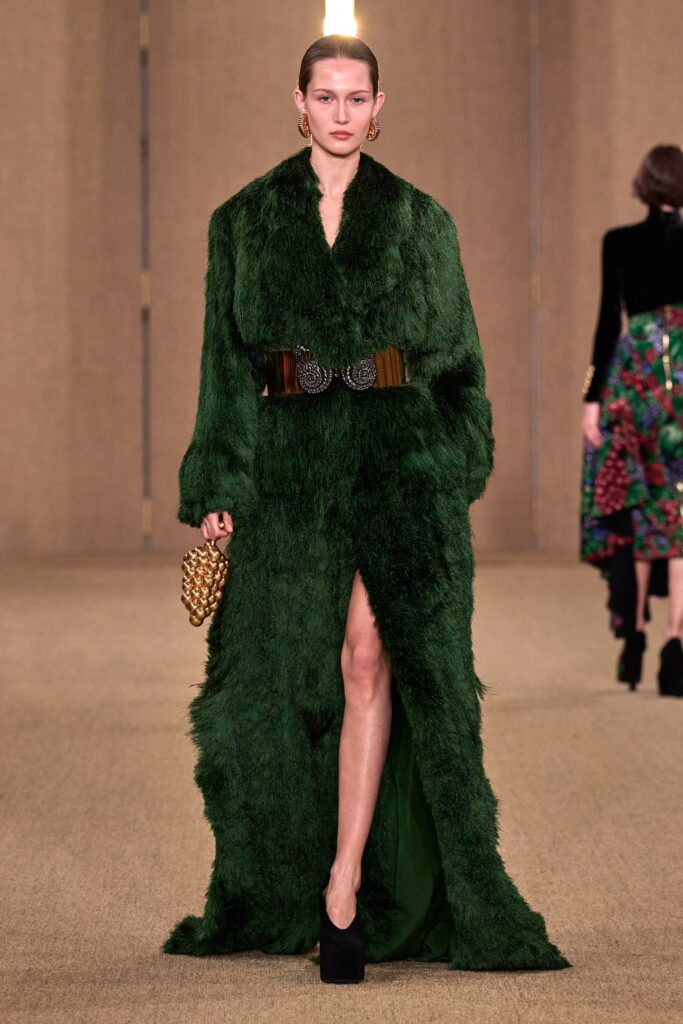
Photo credit: Go Runway
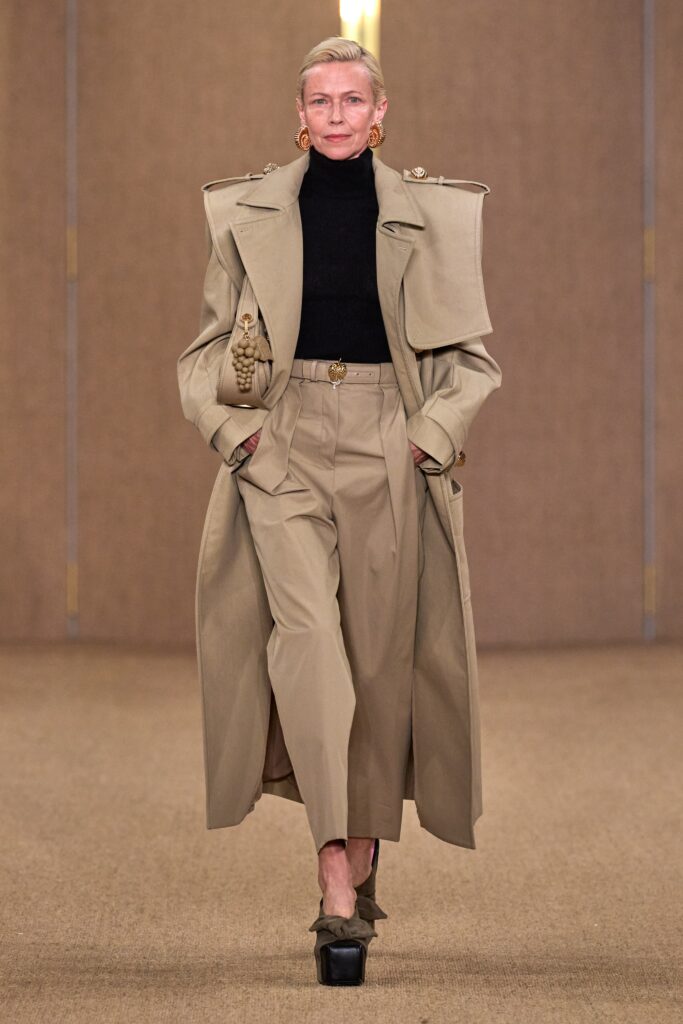
Photo credit: Go Runway

